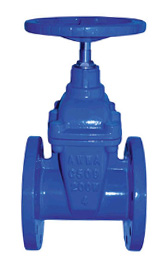12 月 . 03, 2024 16:30 Back to list
knife gate valve
Understanding Knife Gate Valves Functionality and Applications
Knife gate valves are vital components in various industrial applications, designed to manage the flow of fluids in a piping system. They are particularly known for their ability to handle slurries, thick fluids, and materials that contain solid particles, making them indispensable in industries such as wastewater treatment, mining, and pulp and paper.
Structure and Design
The design of a knife gate valve is uniquely suited to its functionality. It consists of a blade, or knife, that is lowered into or raised out of the flow path to control the flow of the medium. The knife gate valve typically features a flat, sharp-edged gate that can cut through and slice any materials that may accumulate or settle in the valve seat, ensuring a clean shut-off even in challenging applications.
These valves are usually constructed from robust materials such as stainless steel, cast iron, or other alloys, allowing them to withstand harsh conditions. The body of the valve comes in various designs including wafer, lugged, and flanged configurations, which can easily be integrated into existing pipelines.
Operational Mechanism
Knife gate valves can be operated manually through a handwheel or automatically through electric, pneumatic, or hydraulic actuators. The operation is straightforward; turning the actuation mechanism raises or lowers the gate, allowing for precise control over the flow rate.
One of the key benefits of knife gate valves is their compact design and low profile, which allows them to be installed in tight spaces where other types of valves might not fit. Additionally, their ease of operation enables quick responses in dynamic process conditions.
Applications in Various Industries
knife gate valve

1. Wastewater Treatment In wastewater treatment plants, knife gate valves are frequently used to isolate sections of the system for maintenance or to control the flow during treatment processes. Their ability to handle sludge and solid waste makes them particularly effective in this setting.
2. Mining and Mineral Processing The mining industry utilizes knife gate valves for controlling the flow of slurries containing various minerals. Their robust design allows them to process abrasive materials, and their capability to withstand high pressures ensures reliable operation.
3. Pulp and Paper In the pulp and paper industry, knife gate valves manage the flow of pulp, water, and chemicals throughout the production process. Their ability to provide a tight seal minimizes leaks, reducing waste and increasing overall efficiency.
4. Food Processing Food-grade knife gate valves made from stainless steel are essential in food processing applications, where hygiene and cleanliness are paramount. These valves can handle solid food materials, and their design allows for easy cleaning and maintenance.
Advantages of Knife Gate Valves
Knife gate valves offer several advantages over other types of valves. Firstly, their simple design translates to fewer moving parts, leading to reduced wear and tear over time. Secondly, they can manage abrasive materials without extensive damage, allowing for longer service life in demanding environments. Moreover, their straightforward operation means they can be quickly opened or closed, which is crucial in emergency situations.
Conclusion
In conclusion, knife gate valves play a critical role in many industrial processes, offering a combination of efficiency, durability, and functionality. Their unique design facilitates the handling of challenging fluids, making them a preferred choice in various sectors. As industries continue to evolve, the demand for innovative valve solutions like the knife gate valve will only grow, ensuring they remain a staple in fluid control technology. Understanding their features, benefits, and applications is essential for engineers and operators alike, who seek to enhance process efficiency and reliability.
Share
-
Understanding the Differences Between Wafer Type Butterfly Valve and Lugged Butterfly ValveNewsOct.25,2024
-
The Efficiency of Wafer Type Butterfly Valve and Lugged Butterfly ValveNewsOct.25,2024
-
The Ultimate Guide to Industrial Swing Check Valve: Performance, Installation, and MaintenanceNewsOct.25,2024
-
Superior Performance with Industrial Swing Check Valve: The Essential Valve for Any SystemNewsOct.25,2024
-
Industrial Swing Check Valve: The Ideal Solution for Flow ControlNewsOct.25,2024
-
You Need to Know About Industrial Swing Check Valve: Functionality, Scope, and PerformanceNewsOct.25,2024